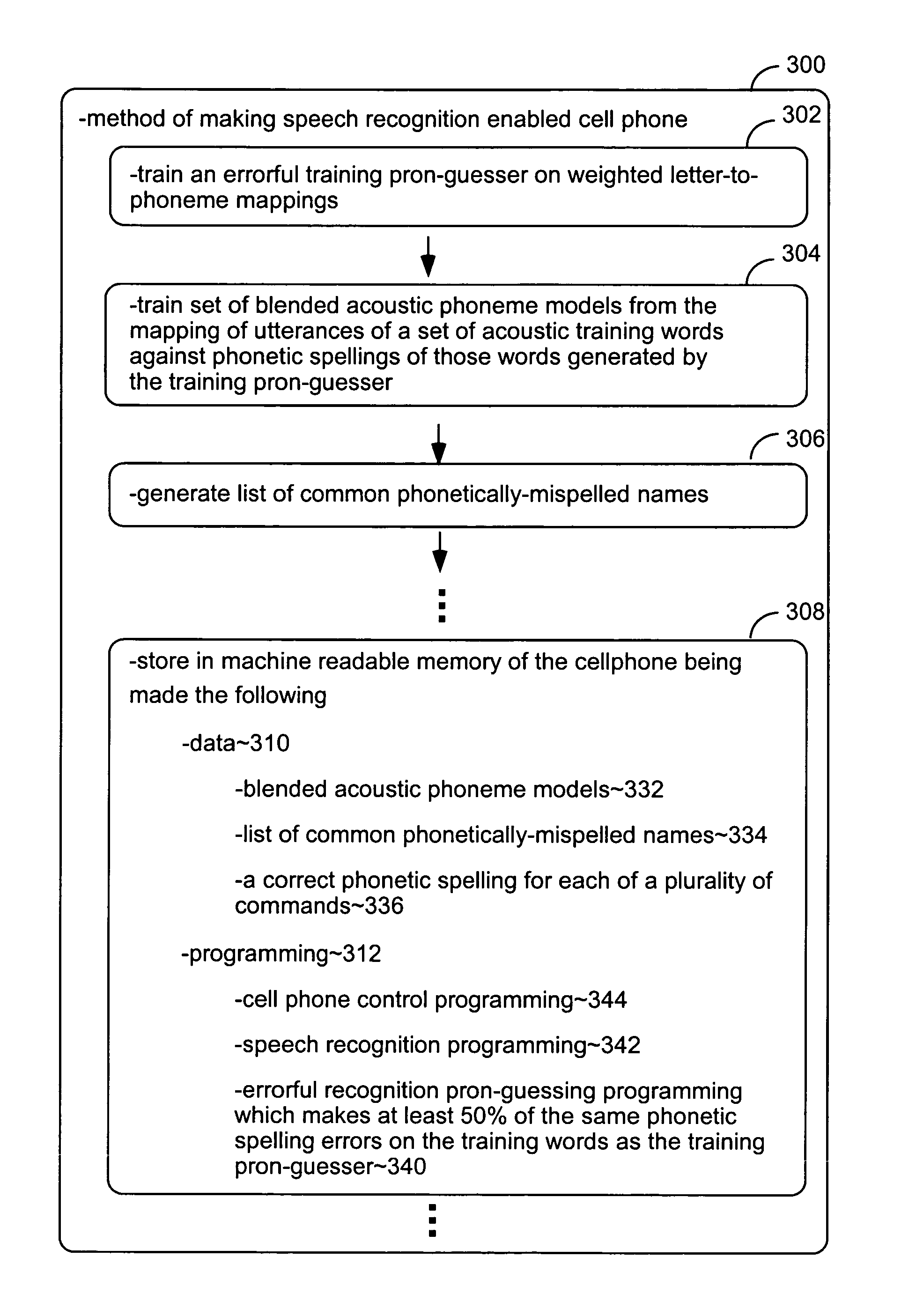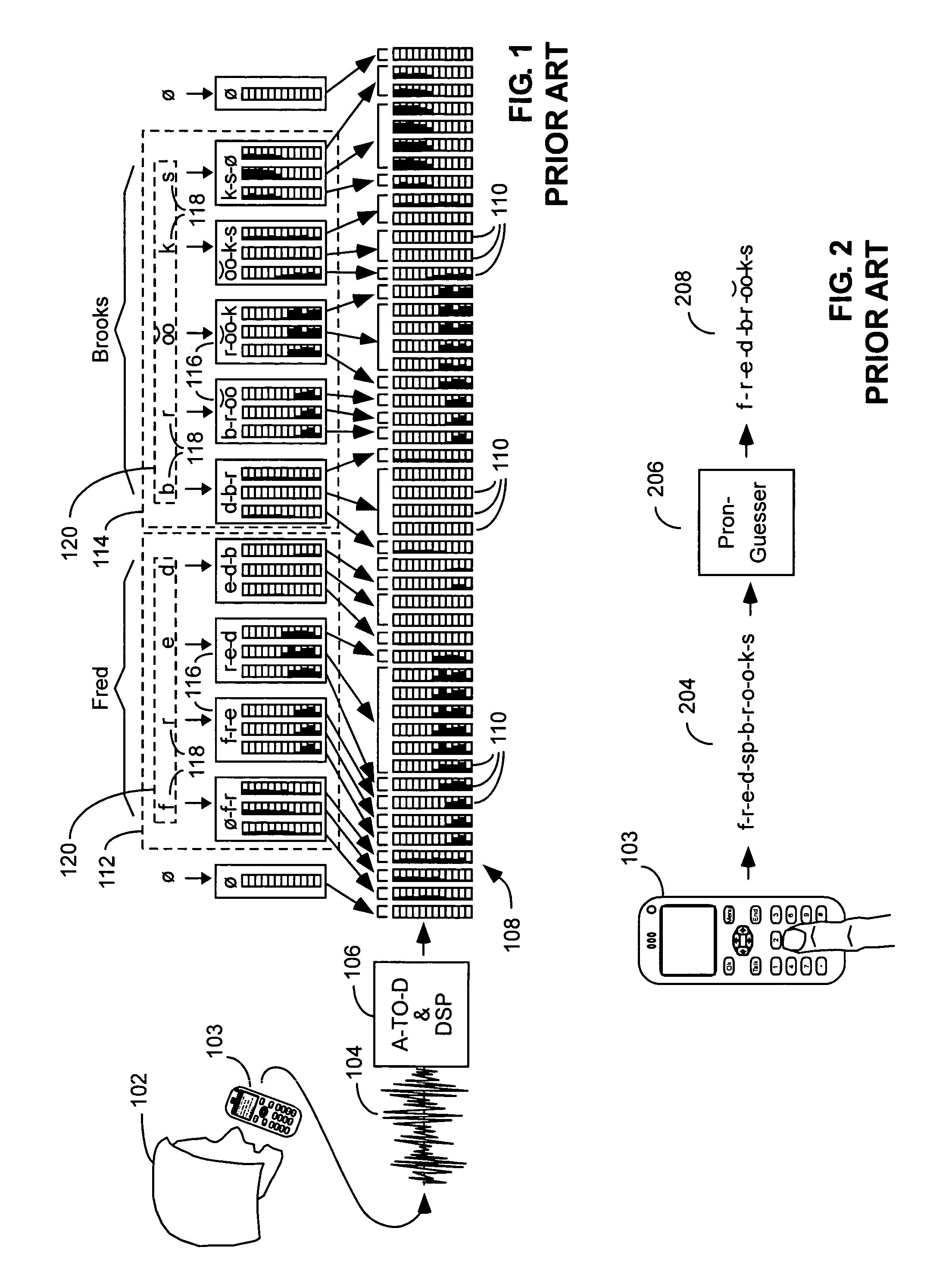Training and using pronunciation guessers in speech recognition
- Summary
- Abstract
- Description
- Claims
- Application Information
AI Technical Summary
Benefits of technology
Problems solved by technology
Method used
Image
Examples
Embodiment Construction
[0091]FIG. 3 is a simplified description of a method 300 for making a speech recognition-enabled cellphone. It focuses on the aspects of such a process most specific to the present invention and does not describe other previously known aspects of the processes, represented by vertical ellipses in FIG. 3, involved in making such a cellphone, such as the manufacture of its circuitry and casing and the production of other aspects of its programming.
[0092]The parts of the method explicitly shown in FIG. 3 include a function 302 that trains an errorful pronunciation guesser to be used in the training of acoustic phoneme models; a function 304 that trains such acoustic phoneme models using phonetic spellings generated by the errorful pronunciation guesser produced by function 302; a function 306 that generates a list of common names that are phonetically misspelled by the errorful pronunciation guesser; and a function 308 that stores data and programming in the cellphone for use in speech...
PUM
 Login to View More
Login to View More Abstract
Description
Claims
Application Information
 Login to View More
Login to View More - R&D
- Intellectual Property
- Life Sciences
- Materials
- Tech Scout
- Unparalleled Data Quality
- Higher Quality Content
- 60% Fewer Hallucinations
Browse by: Latest US Patents, China's latest patents, Technical Efficacy Thesaurus, Application Domain, Technology Topic, Popular Technical Reports.
© 2025 PatSnap. All rights reserved.Legal|Privacy policy|Modern Slavery Act Transparency Statement|Sitemap|About US| Contact US: help@patsnap.com



